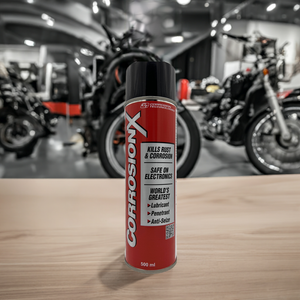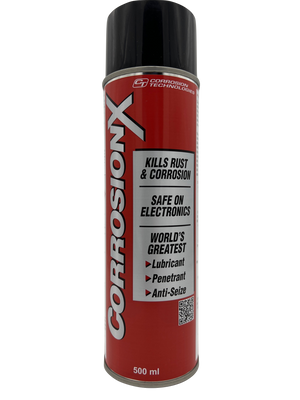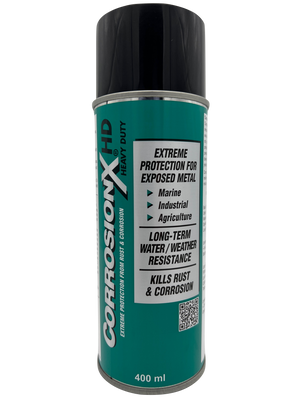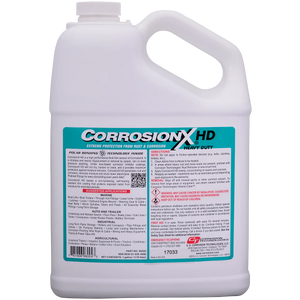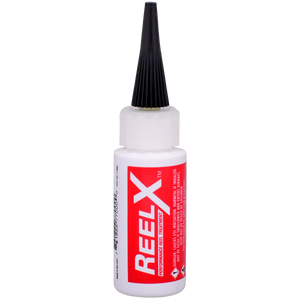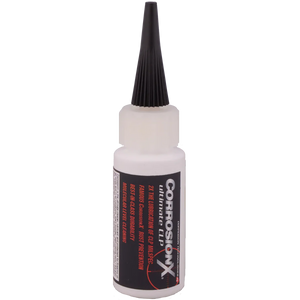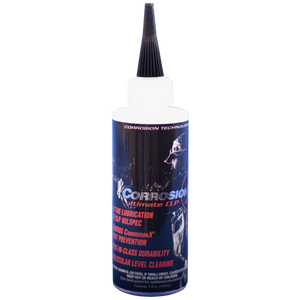There’s a special kind of satisfaction that comes from taking care of your belongings—especially if those belongings include firearms passed down through family generations or carefully selected to meet specific shooting or hunting needs. Gun maintenance is about more than just appearance. It’s about ensuring each shot is consistent, each action is smooth, and each mechanism operates at peak performance. Let’s explore why this process is so vital.
Preserving Performance and Accuracy
Think about the last time you went to the range. Perhaps you lined up the sights, squeezed the trigger, and felt a satisfying recoil followed by a precise hit on the target. That moment of accuracy is no accident—it’s a direct result of a well-maintained firearm. Residue from gunpowder, dirt, and grime can accumulate over time, affecting the internal components. When these residues linger, they can cause misfires, inconsistent bullet trajectories, or jammed mechanisms. By establishing a routine maintenance schedule at home, you’re ensuring that your firearm continues to function as intended, preserving accuracy and reliability.
Avoiding Corrosion and Rust
If left unchecked, corrosion and rust are like cancer for metal. Over time, moisture and oxygen can create tiny chemical reactions on your firearm’s surfaces, leading to pitted, discolored metal. Spotting even a small patch of rust can be disheartening—especially if you take pride in your firearm’s appearance. Regular oiling acts as a protective barrier, preventing harsh environmental factors from eating away at the metal. Whether you store your firearm in a humidity-controlled safe or tuck it away in a simple locker, consistent cleaning and lubrication guard against these destructive elements.
Enhancing Safety
Safe firearm handling isn’t just about muzzle discipline and trigger etiquette—though those are incredibly important. It also involves ensuring that your gun’s internal parts are working harmoniously. A dirty or poorly lubricated mechanism can lead to an unexpected malfunction. Neglecting your firearm is a risk you don’t want to take. Routine checks and proper lubrication help prevent accidental discharges and other safety hazards.
Saving Money in the Long Run
Who doesn’t appreciate saving money? Quality firearms can be an investment, and ignoring maintenance can shorten their lifespan or lead to expensive repairs. By performing regular cleanings and using the right gun oil at home, you’re getting ahead of potential breakdowns and avoiding costly trips to the gunsmith. In essence, your small investment in time and materials now will pay dividends later.
Building a Personal Bond with Your Firearm
Though it might sound sentimental, there’s something incredibly grounding about understanding each piece of your firearm. When you learn to disassemble, clean, and reassemble it, you become more attuned to how it works, how it fires, and where potential problems might lie. This bond fosters respect—a critical quality for any responsible firearm owner.
Understanding the Basics of Gun Oil
Everyone talks about “gun oil” as if it’s some magical elixir that keeps everything running. Yet, you might be wondering, “What exactly makes gun oil so special? Can I just use the same lubricant I put in my car engine?” While the concept might be similar in principle—reducing friction and preventing wear—gun oil is formulated to handle the unique demands of firearms. Let’s break down its primary roles.
Friction Reduction
Gun oil’s most obvious job is to reduce friction between metal parts. When you pull the slide back on a semi-automatic pistol, multiple metal surfaces glide against each other. Without proper lubrication, these surfaces grind and wear, leading to damage over time. By applying the right amount of oil, you create a slick barrier that allows components to move effortlessly.
Rust and Corrosion Prevention
Good gun oils include corrosion inhibitors that protect the metal from environmental factors like humidity, water splashes, or even the sweat from your hands. Over time, metals can oxidize—especially in humid or coastal areas. The right oil can slow or halt this process, helping you avoid rust patches and ensuring you won’t discover nasty surprises when you take your firearm out of storage.
Residue Management
Many high-quality gun oils also help break down or manage carbon fouling and powder residue. After firing, your barrel and internal components collect tiny particles. A good solvent plus the right oil can help in removing these, making subsequent cleaning sessions easier. Think of it like pre-treating a stain on a shirt—it might not make the stain vanish immediately, but it eases the cleaning process.
Temperature Endurance
Firearms can heat up quickly when you’re at the range, especially if you’re firing many rounds in quick succession. Gun oil needs to remain stable and effective under these high-temperature conditions. It should neither burn off immediately nor become excessively thin. The best gun oils are designed to maintain a protective film across a range of temperatures.
Why You Can’t Just Use Any Oil
Even if you’re tempted to swap your gun oil for a multipurpose household lubricant, remember that firearms are specialized machines. Kitchen oils, automotive lubricants, or random mechanical greases might not meet the specific demands of a firearm’s mechanisms. They may also gum up over time or fail to offer sufficient anti-corrosion properties. That’s why selecting a dedicated product—like CorrosionX for Guns—is so crucial.
Tools and Equipment Every Firearm Owner Should Have
Before you begin cleaning or lubricating your firearm at home, you’ll want to build a small arsenal of tools and accessories. Think of this as putting together a first-aid kit, but for your pistol, rifle, or shotgun.
Dedicated Cleaning Brushes and Cloths
Forget about reusing that old toothbrush you found in your garage—proper firearm brushes are designed with either bronze, brass, nylon, or other soft bristles that won’t scratch metal surfaces. Cotton swabs and cleaning patches help access those tricky corners of the action. As you poke around your firearm, these brushes and patches will gently loosen and lift away stubborn residues.
Cleaning Solvent or CLP
In some cases, you’ll use a separate cleaning solvent to dissolve fouling and powder residue. In other situations, you might opt for a CLP (Clean, Lubricate, Protect) product that combines multiple steps. However, even if you use a CLP, applying a specialized gun oil afterward can provide more robust lubrication.
Jags and Bore Guides
Ever wonder how to clean the barrel without turning it into a messy chore? Bore guides help keep cleaning rods centered so they don’t scrape the barrel’s rifling, and jags hold cleaning patches securely, making it simpler to push them through.
Light Source and Magnification
While you don’t necessarily need a microscope, a well-lit area and a small flashlight can help you inspect the chamber and barrel for stubborn gunk or potential damage. Some people swear by their headlamps because they keep your hands free.
A Dedicated Workstation
Cleaning firearms on your kitchen table might be tempting, but chemicals can stain surfaces, and small parts can roll away into oblivion. A designated workbench or a special gun mat is often your best bet. The mat not only protects your table or bench from cleaning chemicals but also helps keep small parts from bouncing away if you drop them.
Protective Gear
Gloves and safety glasses are your friends here. Solvents and oils can irritate your skin or eyes if accidentally splashed. Plus, wearing gloves prevents your fingerprints from transferring onto metal, which can cause acid or moisture from your skin to linger.
Safety Considerations Before You Begin
Firearms command respect—so does the process of cleaning and maintaining them. Before you set out your cleaning kit and break down your firearm, let’s talk about safety measures to keep you, your family, and bystanders protected.
Check and Double-Check It’s Unloaded
The number one rule: treat every firearm as if it’s loaded until you personally verify otherwise. Remove the magazine (if applicable) and visually inspect the chamber to confirm it’s empty. Some owners also prefer to stick a finger inside the chamber to feel for any cartridge. Whatever your preferred method, be thorough. An accidental discharge can have life-altering consequences.
Muzzle Discipline
Even when you know your firearm is unloaded, always point it in a safe direction. It’s a good habit that can prevent disastrous outcomes if something unexpected happens. For instance, if you accidentally left a round in the chamber, that muzzle direction policy might be the barrier between an unfortunate mishap and a harmless scare.
Proper Ventilation
Cleaning solvents and oils can emit fumes, especially if you’re working indoors. Make sure your workspace is well-ventilated. It’s not just about comfort; prolonged exposure to strong fumes can cause headaches or other health issues.
Keep Ammunition in a Separate Area
It’s a good practice to store any ammo in a different place during cleaning. This eliminates the possibility of mixing up live rounds with spent shells or inadvertently chambering a cartridge when testing the action.
Distraction-Free Zone
Finally, keep pets, children, and other distractions away while you clean. Maintaining a firearm involves small parts that can pose a choking hazard for little ones or curious animals. Plus, you want to give your firearm 100% of your attention.
Step-by-Step Guide to Cleaning and Oiling Your Firearm
Let’s jump into the nuts and bolts of how to clean and lubricate your firearm. While models vary widely, the general principles remain the same. We’ll walk through the process at a high level, focusing on best practices rather than specific instructions for each gun type. Always consult your firearm’s manual for model-specific disassembly steps.
Unloading and Disassembling
Start by making sure your firearm is unloaded—this cannot be emphasized enough. Once you’re certain it’s free of any ammunition, follow the manufacturer’s instructions to disassemble the parts you plan to clean. Typically, this includes removing the slide (on a pistol), separating the upper and lower receivers (on certain rifles), or taking out the bolt (on bolt-action rifles). Work methodically:
- Separate major components: Frame, barrel, slide, bolt, magazine, or any other removable part.
- Organize parts: Lay them out on your work surface in a logical order. This helps you keep track of each piece and where it belongs.
A helpful tip: snapping a few reference photos with your phone can be a lifesaver when it’s time to reassemble and you’re second-guessing where that oddly shaped spring goes.
Deep Cleaning the Components
With your parts laid out, it’s time to wage war on carbon deposits, powder residue, and any other gunk.
- Apply a cleaning solvent: Spray or apply it to the barrel’s interior, the slide rails, and other metal parts that show signs of buildup.
- Scrub gently: Use a bore brush to scrub inside the barrel. Pass it through several times. Outside the barrel and other metal pieces can be tackled with a nylon or brass brush to avoid scratches.
- Wipe and repeat: Run patches or a cloth through the barrel until they come out clean. Wipe down each part to remove dissolved grime. You might need multiple passes if the residue is especially stubborn.
Don’t rush this step; thoroughness here will pay off in the long run. If you find particularly tough carbon deposits, let the solvent soak for a few minutes before scrubbing.
Applying Gun Oil the Right Way
Now that everything is spick and span, it’s time to lubricate. This is where selecting a high-quality oil like CorrosionX for Guns shines. The unique formula is designed for deep penetration and long-term protection, making it a breeze to apply.
- Focus on contact points: Think about areas that experience the most friction—slide rails, pivots, triggers, or any metal-on-metal movement. Add a drop or two of oil on each of these surfaces.
- Spread it evenly: Use a clean cloth or a cotton swab to distribute the oil, ensuring a thin, uniform layer. If you see it pooling, you’re using too much.
- Wipe off excess: Excess oil attracts dust and debris, which can form a sticky paste that hinders performance. Ensure only a light film remains.
The beauty of CorrosionX for Guns is that it’s not just about lubrication—it also provides a robust defense against moisture and rust. That’s a huge plus if you live in a damp climate or near the coast.
Post-Maintenance Inspection and Reassembly
Before you jump into reassembling the firearm, give each piece a final once-over.
- Look for leftover residue: A quick scan reveals if there are any stubborn debris left behind.
- Check for wear or damage: Inspect surfaces for unusual wear patterns, cracks, or signs of fatigue. This is your chance to catch problems early.
- Reassemble carefully: Follow your manufacturer’s instructions in reverse order. Those reference photos you took earlier will come in handy.
Finally, do a quick function check (without ammunition) to ensure everything feels smooth. Rack the slide, check the safety, and pull the trigger on an empty chamber to confirm that all components are working as intended.
Introducing CorrosionX for Guns — A Game-Changer in Your Maintenance Routine
Let’s talk specifics about a product many firearm enthusiasts have grown to love. CorrosionX for Guns is not just any run-of-the-mill oil. It’s formulated to provide exceptional protection, unparalleled lubrication, and deep penetration. So, what sets it apart?
Advanced Corrosion Resistance
Metal surfaces, especially in firearms, are highly susceptible to moisture-induced oxidation. CorrosionX for Guns forms a micro-thin film that clings to metal, acting as a fortress against rust and other forms of corrosion. If you’ve ever felt that sinking feeling when discovering reddish-brown patches on your beloved firearm, you’ll appreciate how vital this feature is.
Penetration Capabilities
Sometimes, grime or residue can get wedged into crevices that are difficult to see, let alone reach. The specialized formula in CorrosionX for Guns seeps into these nooks, loosening up deposits and providing lubrication that extends well beyond the surface level.
Versatility Across Different Firearm Types
Not all products work equally well for pistols, shotguns, and rifles. Some oils might excel at semi-automatic handguns but break down under the high heat generated by fully automatic rifles. CorrosionX for Guns has proven to be an all-rounder, gaining popularity among hunters, competition shooters, collectors, and even professional gunsmiths.
Ease of Application
If you’re new to at-home gun maintenance, you’ll likely appreciate an oil that’s forgiving of small mistakes. Even if you accidentally apply a bit more than you intended, CorrosionX remains relatively easy to wipe away, leaving behind a thin, protective film. This simplicity encourages consistent use, which is the cornerstone of good gun care.
Environmental Considerations
Some older lubricants or solvents release strong fumes and can be harsh on skin, surfaces, and the environment. CorrosionX for Guns boasts a more modern, low-VOC formula, reducing the intensity of fumes and lessening its ecological impact. That’s a huge relief if you’re cleaning indoors or want to be more environmentally conscious.
Long-Term Storage Strategies and Moisture Control
Think about how you might store fine wine or an antique car—you don’t just toss it into the garage and hope for the best. Firearms, especially ones that hold sentimental or significant monetary value, need proper storage to remain in pristine condition.
Choosing the Right Storage Space
A safe or lockable cabinet is a sensible choice for security reasons. Beyond safety, though, consider the environmental factors in that storage area. Is it damp? Prone to rapid temperature changes? Ideally, you want a stable environment with moderate humidity levels. High moisture levels accelerate rust formation, so if your climate is humid, a dehumidifier or silica gel packs can work wonders.
Pre-Storage Preparation
Before storing your firearm for an extended period, give it a thorough cleaning and add a protective layer of oil. If you’re using CorrosionX for Guns, that helps create a safeguard against ambient moisture. Some owners even apply a slightly heavier coat for long-term storage and then wipe off the excess before using the firearm again.
Periodic Inspections
Even if you’re not actively shooting, it pays to check your stored firearms every month or so. Look for signs of condensation, rust spots, or dust accumulation. If you discover any moisture, act quickly—wipe down and reapply oil as necessary.
Using Protective Covers
Gun socks or specialized firearm covers can offer another layer of defense against dust and minor abrasions. However, be sure the material is breathable if you’re in a humid environment. Trapping moisture inside a sealed bag with your firearm can quickly lead to the very problem you’re trying to avoid.
Troubleshooting Common Gun Maintenance Challenges
Even with the best intentions, bumps in the road can occur. Maybe you notice discoloration on metal surfaces, or you experience repeated malfunctions at the range. Let’s tackle a few typical maintenance hiccups and how to address them.
Persistent Rust Spots
If you find a rust spot that keeps coming back, it’s possible you’re missing some underlying moisture or not fully removing previous corrosion. Scrub the area with a rust-removal cloth or soft brush and reapply oil. For stubborn cases, a light abrasive pad can help, but be cautious not to damage the metal’s finish.
Excessive Residue After Firing
Some firearms simply run “dirty,” especially if you’re using certain types of ammunition. The key is thorough post-range cleaning. A more powerful solvent might be needed, or you could try letting the solvent soak longer before brushing. Follow up with a specialized gun oil that can help manage residue between deep cleans.
Sticky Actions or Jams
Over-lubrication can be as problematic as under-lubrication. If you’re noticing issues with the action or slide, consider removing old oil and debris buildup, then reapplying a thinner layer. Also, check for bent or worn springs, as mechanical failures can mimic poor lubrication symptoms.
Unusual Wear Patterns
If you see uneven wear on slides, bolts, or receivers, that’s often a signal something isn’t aligned correctly or a part is malformed. Consult a gunsmith to diagnose the issue, as ignoring it can lead to further damage or potential safety risks.
Where to Find CorrosionX for Guns in Finland
If you’re reading this and happen to be in Finland—or simply planning a trip there soon—you might be wondering where to get your hands on CorrosionX for Guns. Look no further than Tallitkuntoon, a local company dedicated to providing top-quality solutions for various maintenance needs. For more information or to place an order, check out their website at www.tallitkuntoon.fi. They’re your go-to resource in Finland for CorrosionX products, ensuring you can keep your firearm in prime condition even in challenging Nordic climates.
Ensuring Longevity: A Maintenance Schedule That Works
One of the biggest stumbling blocks for new firearm owners is knowing how often to clean and oil. “After every range trip? Once a year? Only if it looks dirty?” The real answer is a bit more nuanced and depends on how often you shoot, the environmental conditions, and how the firearm is stored.
Light Range Use (Every Few Weeks)
If you’re shooting occasionally, it’s wise to perform a basic cleaning after each range session to remove powder residue and fouling. A thorough cleaning and oiling might be done every few range trips. Wipe down the exterior to remove fingerprints and moisture each time.
Frequent Use (Weekly or Bi-Weekly)
Competitive shooters or avid enthusiasts might be firing hundreds of rounds a week. In these cases, a weekly deep clean is often recommended. The more you shoot, the more residue accumulates, and the more friction your parts endure. Regular lubrication is your best bet for preventing premature wear.
Long-Term Storage
If a firearm is going into storage for months or more, go for an exhaustive cleaning session first. Apply a slightly heavier layer of oil to guard against corrosion. Then, don’t just lock it away and forget it—do a quick check monthly if possible. Even if it’s a visual inspection without a full teardown, it can catch potential issues early.
Environmental Factors
If you live near the sea or in a particularly humid region, you may need more frequent oil checks. Salt in the air can speed up corrosion, and humidity can cause condensation. Also, if you go hunting in the rain or snow, you’ll want to clean and oil your firearm as soon as you’re back indoors to avoid letting moisture linger.
Final Thoughts on DIY Gun Care
Maintaining your firearm at home is a labor of love. It’s akin to caring for a classic car—regular tune-ups, fluid checks, and polishing ensure that your prized possession remains in top form for years to come. By investing in the right tools, setting aside ample time, and selecting a high-quality oil like CorrosionX for Guns, you’re preserving both the performance and the history contained in your firearm.
Beyond the practical side, there’s an intangible reward that comes from this hands-on approach. Each pass of a cleaning patch and every drop of oil you apply deepens your understanding of how your firearm works and why it’s special. When you head to the range and feel that seamless slide cycle, hear the crisp report of a well-lubricated mechanism, and see your bullet punch a perfect hole in the target, you’ll know that your dedication behind the scenes made all the difference.
Staying Informed and Inspired
Just as you read manuals or watch videos on how to fix a leaking faucet, continued education can elevate your firearm upkeep skills. Books, online forums, gun clubs, and even shooting coaches can offer pearls of wisdom that help you refine your technique. Whether you’re cleaning your first .22 or you’ve built a collection of various calibers and types, there’s always more to learn.
Responsibility and Pride
Proper maintenance doesn’t just help you avoid costly repairs or replacements; it underscores a broader sense of responsibility. Firearms can be dangerous in the wrong hands or in poor condition. By maintaining yours well, you’re not only protecting your investment but also respecting the seriousness and history of gun ownership.
Honoring Tradition
For many of us, firearms aren’t just mechanical devices; they’re heirlooms, collectors’ items, or a link to cherished moments in the outdoors. If you have a rifle passed down from your grandfather or a shotgun that’s shared countless hunting memories, your cleaning ritual becomes a way to honor the past. By meticulously caring for that firearm, you’re preserving a piece of family history for the next generation.
In summary, at-home gun maintenance is about blending practical skill with heartfelt respect. With consistent effort, the right supplies, and a willingness to learn, you’ll ensure each pull of the trigger remains as satisfying and safe as the day you first fired your firearm. And remember, if you’re in Finland, you can rely on Tallitkuntoon at www.tallitkuntoon.fi to supply you with the CorrosionX products you need for long-lasting, reliable performance.
So go ahead—set up your workspace, break out your cleaning kit, and treat your firearm to the best care possible. When you experience that flawless firing cycle, free from jams and unexpected hitches, you’ll know your efforts were well worth it.


